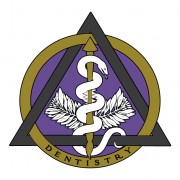Benefits of dental sealants
There is no replacement for taking proper care of your teeth. However, it can be difficult to get children to brush and floss as much as they should, which is why they are more susceptible to cavities. Since our adult teeth can come in as early as six years of age, it’s very important to take care of them, as we will have these teeth for the rest of our lives. Fortunately, there is an additional measure of protection parents can choose to put on their children’s teeth: dental sealants.
What is a dental sealant?
A dental sealant is simply an additional layer of protection that can be placed on children’s teeth. It’s made of a very common dental composite that is resin based, bis-GMA (bisphenol A-glycidyl methacrylate). This is often the same material used for cavity fillings. It bonds micro-mechanically to properly prepared teeth, providing a lasting hold that actually strengthens the teeth it’s attached to. The process is simple:
- Teeth are cleaned of all plaque and food deposits
- A tooth is dried
- Then etched – which creates tiny irregularities that make it easier for the resin to bond to it
- It is rinsed and dried again
- The sealant is applied
- A self-curing light is used for thirty seconds to harden the resin
- And the process is repeated until all teeth are finished
When should their teeth be sealed?
Once the final permanent tooth erupts. The American Academy of Pediatric Dentistry says that using a sealant “has shown a reduction of cavities’ incidence [by] 86 percent after one year and 58 percent after four years.” So it’s important to have it done quickly after the child has all of their permanent teeth for maximum protection, typically around age six.
How long does it last?
If the child takes proper care of their teeth, the sealant can last as long as ten years! Chips, wear, and tear will happen as time goes on, but a dentist can repair any chinks in this particular armor. It’s a simple matter of reapplying the sealant to the affected tooth. For this reason, it’s important to maintain your regular dental check-ups, twice a year.
Adults that don’t have decay or fillings in their molars can also have their teeth sealed! It’s a wonderful way to keep your teeth healthy and prevent cavities. If you are interested in having your or your child’s teeth sealed, set up an appointment with Dr. Chauvin!












